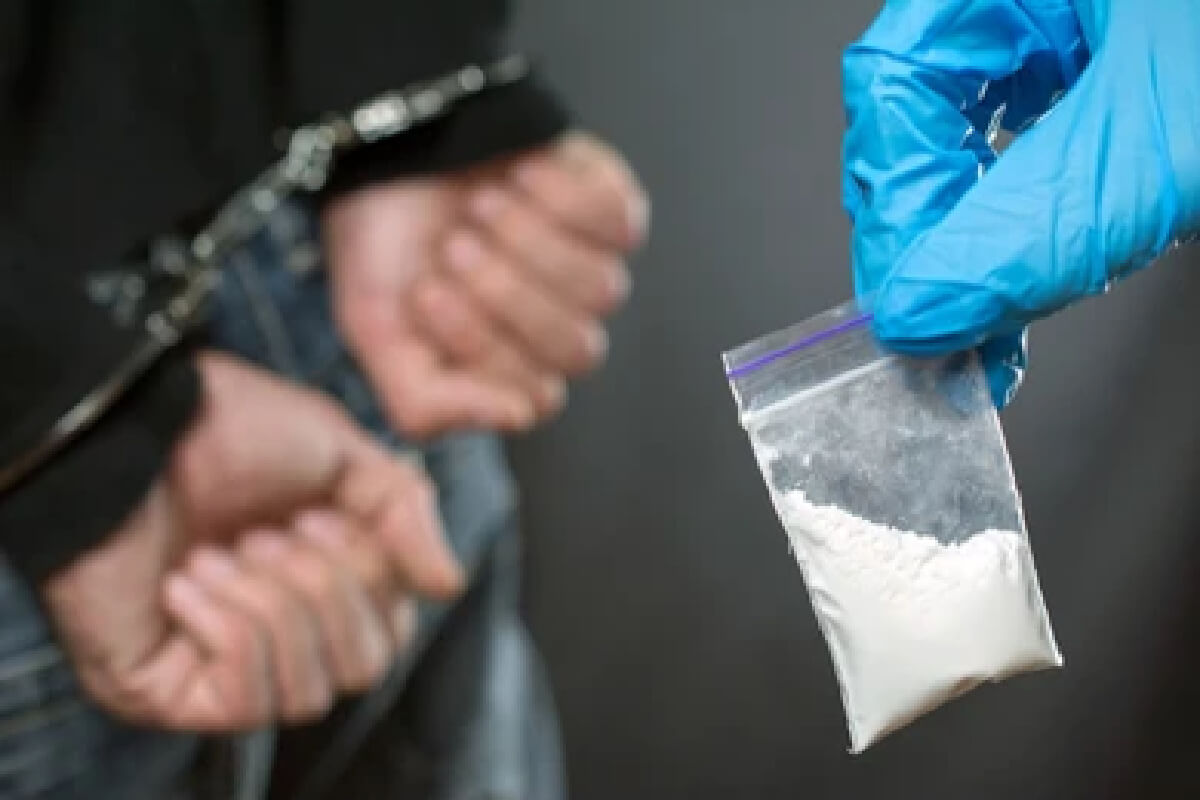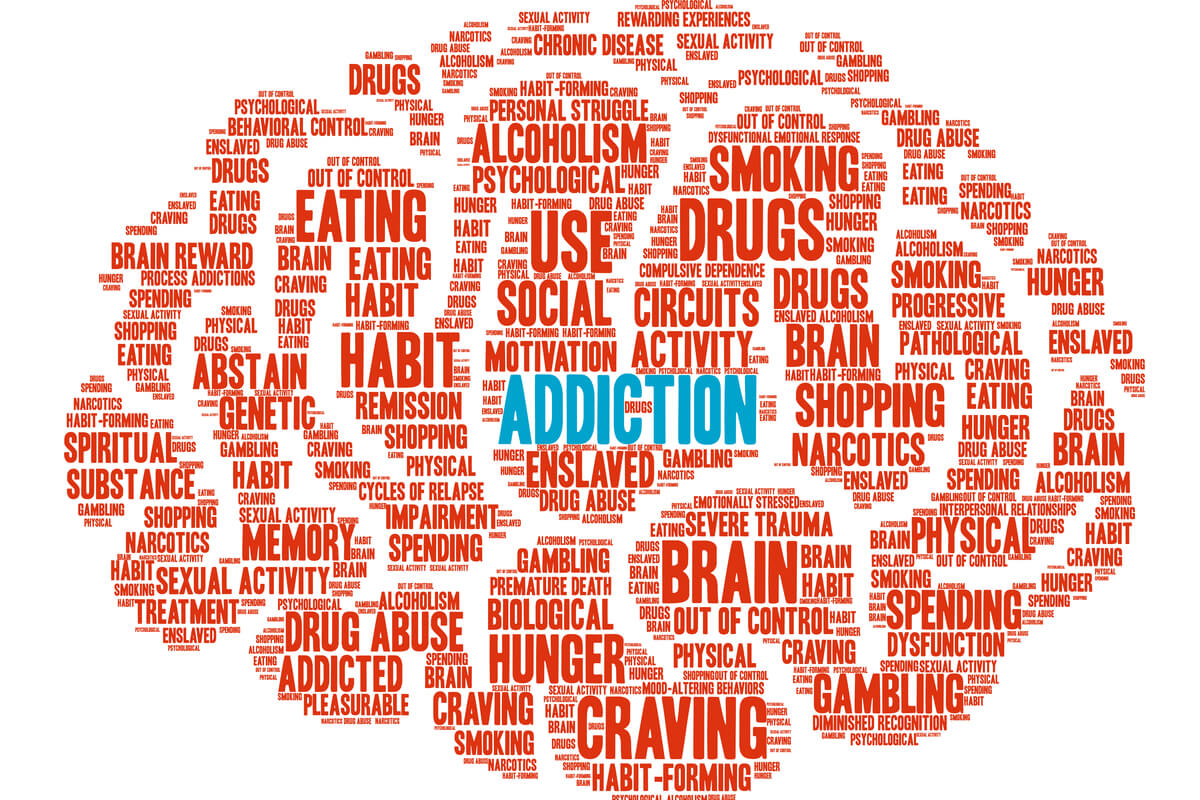
Ice is a street name for the drug methamphetamine, or meth, in its “rock” or crystal form.
Methamphetamine is a man-made stimulant drug that is commonly manufactured in illegal and clandestine laboratories and sold on the street. Ice is typically misused by smoking it after melting it down.
In 2020, approximately 2.5 million people in the United States misused methamphetamine.[1] Using meth or ice can be extremely dangerous and lead to many physical and psychological consequences.
What Is Ice?
Ice is a powerful and dangerous drug that is classified as a Schedule II controlled substance by the DEA (Drug Enforcement Administration).[2] Methamphetamine pills are sold under the brand name, Desoxyn, to treat attention-deficit/hyperactivity disorder (ADHD) and obesity.
However, illicitly-made forms of meth like crystal meth and ice are illegal and not used medically.
Typically, meth is created illegally in clandestine laboratories in either powder or “rock” form (as crystal meth, also called ice). Ice is produced as shiny blue-white “rocks” that often resemble glass.
Other Names for Ice
Ice is one of the more common street names for crystal meth, but it can also go by several other names, including:
- Glass
- Tina
- T
- Crystal
- Meth
- Shabu
- Shards
Additional street names for meth include the following:
- Beanies
- Crank
- Batu
- Biker’s coffee
- Yaba
- Chicken feed
- Hiropon
- Tweak
- Speed
- Stove top
- Go-fast
- Poor man’s cocaine
- Methlies quick
- Ventana
- Yellow bam
- Vidrio
- Uppers
- Chalk
How Is Ice Used?
Ice typically is manufactured in glass-like shards/powder that is then melted down to be smoked, usually in a small glass pipe.
Meth can also be abused by:
- Swallowing the drug
- Snorting it in its powder form
- Injecting the dissolved version of it
Snorting, smoking, or injecting meth sends it quickly into the bloodstream and up across the blood-brain barrier. There, it speeds up the functions of the central nervous system and creates a euphoric high.
Ice is often taken in a kind of binge-and-crash pattern. Repeated doses are taken back to back as it wears off to restart the high.
The more often a person takes ice, the more tolerant the body will become to certain amounts of the drug. Higher doses or alternative methods of abuse are then needed to achieve the same high. Regular users of meth often take more of the drug, take it more often, or switch up the way they take it to intensify its effects.
Effects on the Body
As a powerful stimulant drug, ice causes an intense and short-lasting “rush” and burst of euphoria when smoked, snorted, or injected. The drug creates a surge of dopamine (one of the chemical messengers that signals feelings of pleasure) in the brain.
It speeds up bodily functions, such as heart rate, blood pressure, and breathing rates. It raises body temperature.
Ice can also cause the following effects on the body:
- Decreased appetite
- Elevated energy levels
- Talkativeness
- Wakefulness
- Higher levels of physical activity
The increased levels of dopamine in the brain that ice creates contribute to its high rate of drug dependence and potential for addiction.[3] The rapid elevation of these dopamine levels activates the brain’s reward system, which can reinforce the desire to continue taking this drug.
Short-Term & Long-Term Side Effects
Taking meth or ice can result in numerous dangerous side effects, some of which can be fatal.
The causes of a “meth overdose” are different from those of, say, an opioid overdose. Because meth is a stimulant, overdose usually causes tachycardia (fast heart rate) and so much strain on the heart that a heart attack can develop. Blood pressure can also be raised to the point of causing an acute stroke. [4]
Additional short-term side effects of meth can include the following:[3],[4]
- Rapid or irregular heart rate
- Heightened blood pressure
- Fast breathing
- Inability to sleep or eat
- Hyperthermia
- Hyperactivity
- Accidents or injuries due to feelings of invincibility
- Impulsive and potentially reckless behaviors, including risky sexual encounters
Injecting meth can increase the risk of contracting an infectious disease, such as hepatitis B or C or HIV. This method of use can also cause scarring around the injection sites, collapsed veins, and high rates of bacterial infections that can travel through the blood and spread to the body causing serious infections in the bone (osteomyelitis) or heart (endocarditis).
Long-Term Consequences of Using Ice
Long-term use of meth can lead to drug tolerance, dependence, difficult withdrawal symptoms when the drug wears off, and a substance use disorder. Chronic use of meth changes the brain’s structure and function. It can lead to memory and cognitive issues as well as a potentially higher risk of developing Parkinson’s disease, a nerve disorder that affects movement.
Long-term side effects of meth can include the following:[3],[4].[5]
- Extreme weight loss
- Dental issues, often called meth mouth
- Skin issues related to itching and scratching
- Violent behavior
- Hallucinations
- Paranoia
- Anxiety
- Sleep issues
- Confusion
- Memory loss
- Impaired verbal learning
- Movement and coordination issues
- Homicidal or suicidal thoughts
Signs of Methamphetamine Use Disorder
Meth is highly addictive. Signs of Ice addiction can include the following:[5]
- Drug tolerance (needing to take more to feel the same effects)
- Physical and mental changes, including drug dependence and withdrawal when the drug processes out of the body
- Personality changes
- Social withdrawal and changes in one’s social circle
- Increased risk-taking behaviors and using meth in dangerous situations
- Drug cravings
- Inability to stop taking ice despite trying to
- A decline in school and work performance
- Becoming less reliable and shirking responsibilities
- Continuing to take the drug despite negative social, emotional, and physical consequences
- More and more time is devoted to thinking about, talking about, and using and recovering from Ice
Meth Withdrawal Symptoms
Meth withdrawal can cause a host of physical and psychological side effects, such as these:[3],[5]
- Irritability
- Depression
- Mental “fogginess”
- Anxiety
- Significant drug cravings
- Sleep issues
- Increased appetite
- Fatigue
- Psychosis (hallucinations and delusions)
- Trouble feeling pleasure
Signs of a Meth Overdose
Between 2015 and 2019 overdoses involving meth tripled in people in the United States for those between the ages of 18 and 64.[6] A meth overdose often involves the following signs and symptoms:
- Overheating
- Rapid heart rate
- Elevated blood pressure
- Increased respiration
- Agitation
- Chest pain
- Possible loss of consciousness, unresponsiveness, or coma
- Extreme stomach pain
- Seizures
- Paranoia
An overdose can lead to stroke, heart attack, or organ failure due to hyperthermia.
Treatment Options
Ice is a powerful and addictive drug. Specialized addiction treatment is the most beneficial choice to address both physical and mental complications.
Treatment is specific to each individual and can be as structured as necessary. Outpatient programs as well as more intensive inpatient, or residential, options are available.
Treatment programs often include a combination of the following:
- Detoxification
- Medications
- Behavioral therapies and counseling
- Medical care
- Treatment for co-occurring disorders, such as depression and anxiety
- Support groups
- Educational programs
- Life skills training
Legal Penalties for Ice
Meth, or ice, is an illegal substance. If you are found in possession of illegal meth (illicitly manufactured meth or any form of meth without a legal prescription), you can be fined thousands of dollars or even serve jail time. In addition, if you are found with a certain larger quantity (dependent on your state), you can be charged with “intent to distribute” which can mean more significant fines and/or jail time.
Ice is considered a federally illegal substance, as it is manufactured illicitly and for recreational use. Any possession of ice is a federal offense that can carry stiff legal and financial penalties.

Reviewed By Peter Manza, PhD
Peter Manza, PhD received his BA in Psychology and Biology from the University of Rochester and his PhD in Integrative Neuroscience at Stony Brook University. He is currently working as a research scientist in Washington, DC. His research focuses on the role ... Read More
- Key Substance Use and Mental Health Indicators in the United States: Results from the 2020 National Survey on Drug Use and Health. Substance Abuse and Mental Health Services Administration. https://www.samhsa.gov/data/report/2020-nsduh-annual-national-report. October 2021. Accessed August 2022.
- Drug Scheduling. Drug Enforcement Administration. https://www.dea.gov/drug-information/drug-scheduling. Accessed August 2022.
- Methamphetamine DrugFacts. National Institute on Drug Abuse. https://nida.nih.gov/publications/drugfacts/methamphetamine. May 2019. Accessed August 2022.
- Methamphetamine Drug Fact Sheet. Drug Enforcement Administration. https://www.dea.gov/sites/default/files/2020-06/Methamphetamine-2020_0.pdf. April 2020. Accessed August 2022.
- American Psychiatric Association. (2013). Diagnostic and statistical manual of mental disorders (5th ed.). https://doi.org/10.1176/appi.books.9780890425596
- Methamphetamine-Involved Overdoses Nearly Tripled Between 2015 and 2019, NIH Study Finds. National Institutes of Health. https://www.nih.gov/news-events/news-releases/methamphetamine-involved-overdose-deaths-nearly-tripled-between-2015-2019-nih-study-finds. September 2021. Accessed August 2022.
Download Our Free Program Guide
Learn about our program, its effectiveness and what to expect
Related articles
Imagine what’s possible on the other side of opioid use disorder.
Our science-backed approach boasts 95% of patients reporting no withdrawal symptoms at 7 days. We can help you achieve easier days and a happier future.









